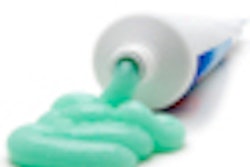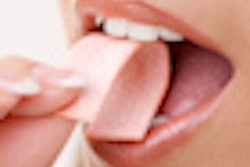A new study has found that 20% to 30% of dental bib clips still harbor bacterial contaminants even after proper disinfection procedures.
Researchers at Tufts University School of Dental Medicine, in collaboration with researchers at the Forsyth Institute and with funding support from Dux Dental, found that rubber-faced metal bib clips retained more bacteria than bib clips made only of metal before disinfection.
The study, published in the Compendium of Continuing Education in Dentistry, also found that before disinfection, bib clips used during orthodontic procedures had three times the bacterial load of those used during endodontic procedures, suggesting that the nature of dental treatment impacts the number of bacteria present on the clips (August 2012, Vol. 33:7 [suppl]).
The study is believed to be the first published peer-reviewed study on bib clip contamination, according Dux.
The researchers analyzed bacterial loads on bib clips from a total of 80 dental bib holders -- 40 collected from Tufts University School of Dental Medicine's endodontics clinic and another 40 collected from the school's orthodontics clinic. From each chain, both clips that hold the dental bib were sampled before and after practitioners disinfected the bib holder following the school's disinfection protocol, which requires the holder to be wiped down with an Environmental Protection Agency (EPA)-approved disinfectant wipe, according to the manufacturer's instruction.
While disinfecting reduced bacterial contamination by 92%, some bacteria remained on several bib clips even after disinfection, the researchers noted. Further research is under way to identify the bacterial species in samples from both pre- and postdisinfected bib clips to determine whether they retain disease-causing bacteria and if they pose contamination risks, they explained.
The nature of dental treatment and style of bib clips impact the level of bacteria on bib clips, the researchers noted. Before disinfection, metal and rubber-faced metal bib clips collected from the orthodontics clinic had 149% to 205% more bacteria, respectively, than clips collected from the endodontics clinic. The use of rubber dams during endodontic treatment could limit the contamination of bib clips, while orthodontic treatment may result in higher bacterial presence on clips since it involves entering and re-entering the mouth multiple times. After disinfection, the bacterial counts on clips from both clinics were similarly reduced.
Before disinfection, rubber-faced metal bib clips were found to have more than double the number of bacteria on average than metal clips had. Rubber-faced metal bib clips collected from the endodontics clinic had a 119% higher bacterial count than metal bib clips and a 167% higher bacterial count on those from the orthodontics clinic before disinfection. After disinfection, the bacterial counts on both styles of clips were found to be similar.



















